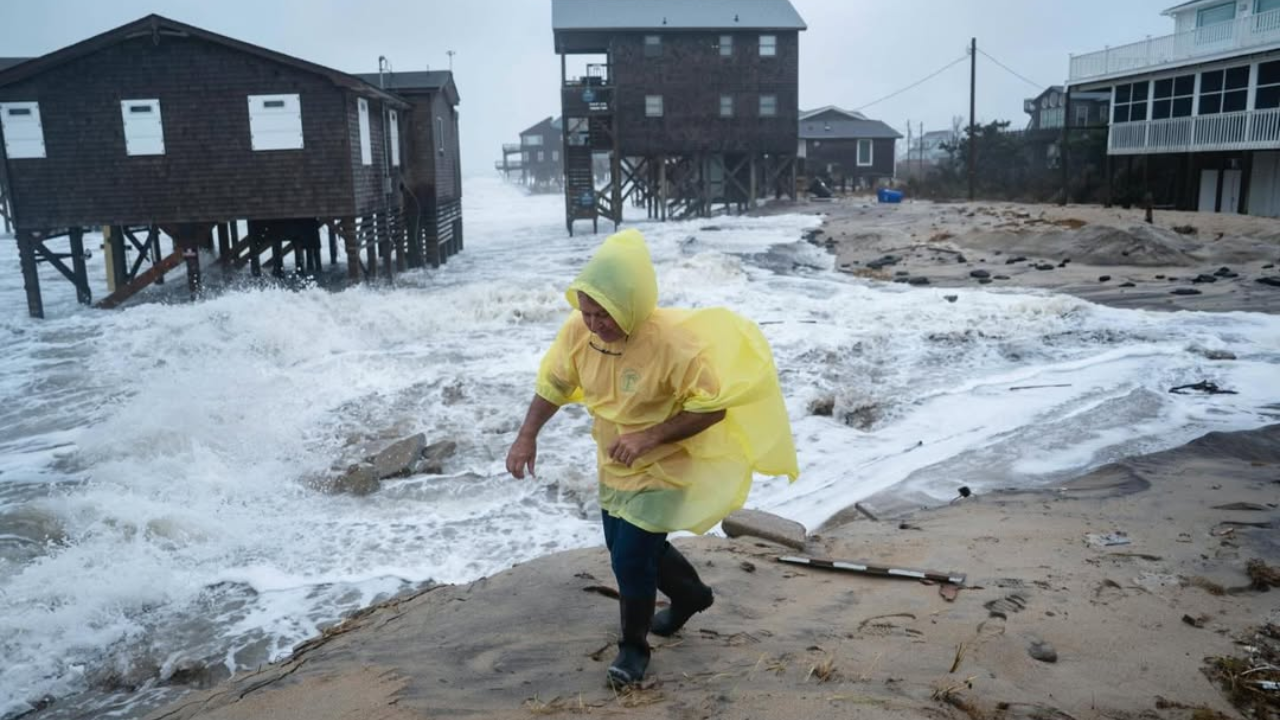
When remnants of Typhoon Halong slammed into western Alaska this October, it wasn’t just another autumn storm—it was a force of nature unlike anything locals had seen in years. Winds howled across the tundra as massive waves swallowed villages like Kwigillingok and Kipnuk.
Entire homes were ripped from their foundations and tossed aside like driftwood. “It was the worst I’ve ever seen,” said Jamie Jenkins, a 42-year-old Napakiak resident. Families clung to rooftops and trees, watching their world vanish in minutes.
Communities Struggle as Floodwaters Rise
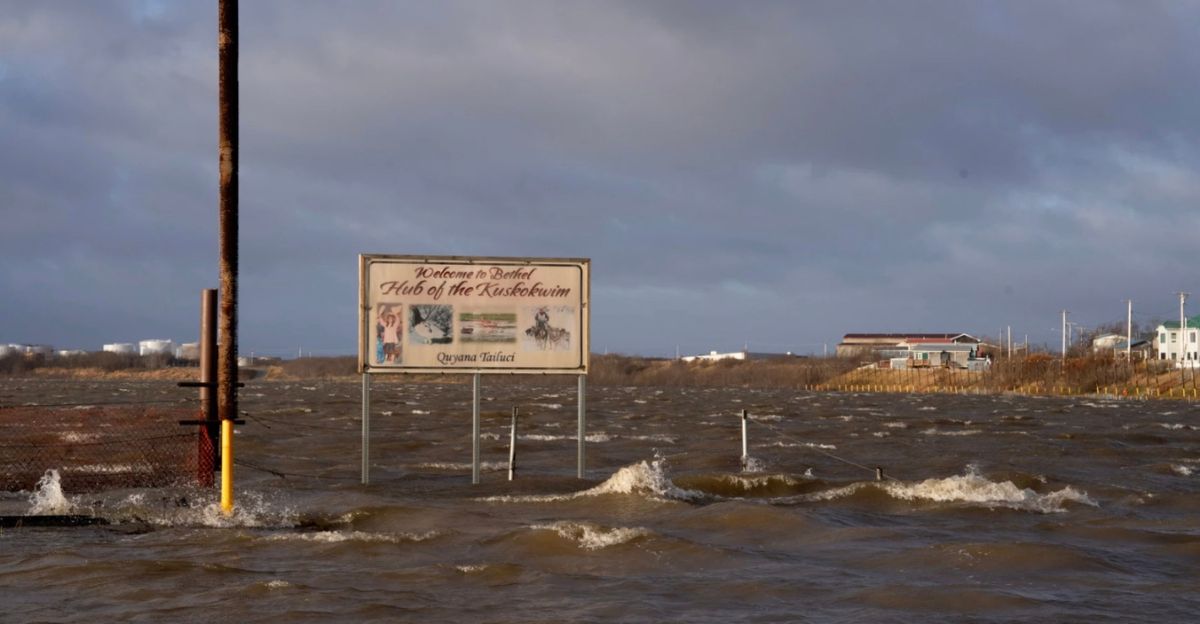
By the time the surge hit, it was too late to run. Streets disappeared under brown, churning water as power lines crackled in the wind. Dozens of homes were destroyed or left uninhabitable, local health officials confirmed. “The speed and strength of this storm left little time to react,” said a local emergency coordinator.
Neighbors worked side by side, wading through waist-deep water to move pets and essential supplies—proof that community becomes the greatest lifeline in disaster.
Past Disasters Resurface in Memory
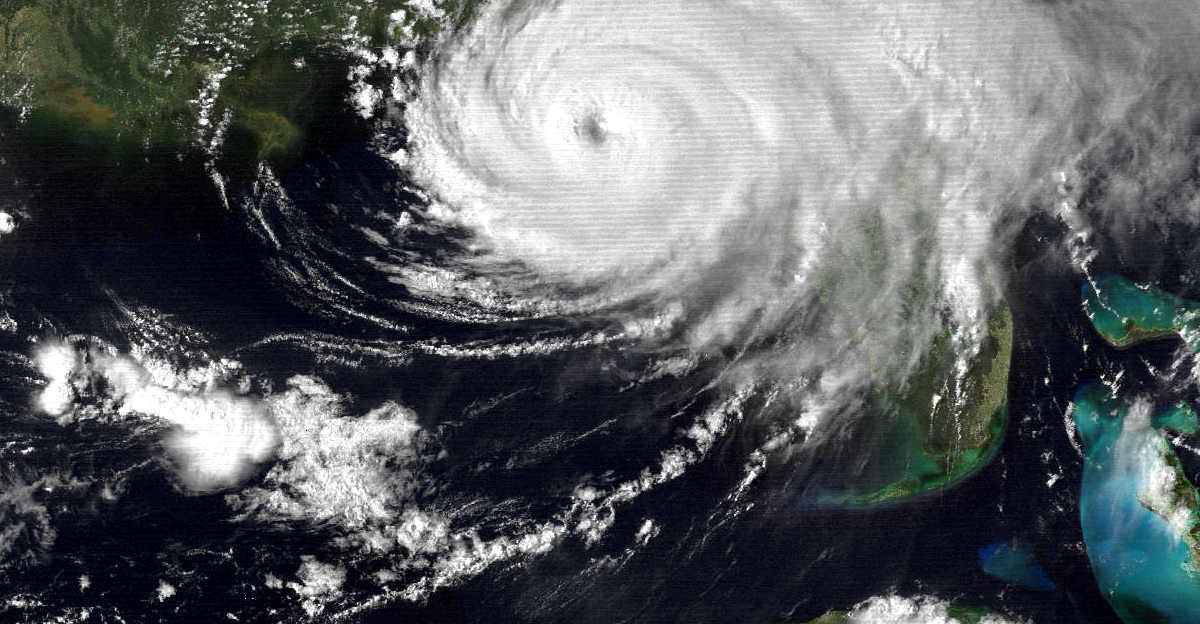
For some residents, the destruction felt eerily familiar. Memories resurfaced of earlier storms that had torn through coastal towns, like Hurricane Elena in 1985, which destroyed nearly 190 homes on Alabama’s Dauphin Island. “We went to sleep with a community and woke up with only memories,” a survivor recalled.
Officials said the parallels serve as a reminder that across decades and distances, storms leave the same human imprint—loss, fear, and a stubborn will to rebuild.
Record Floodwaters Spark Panic
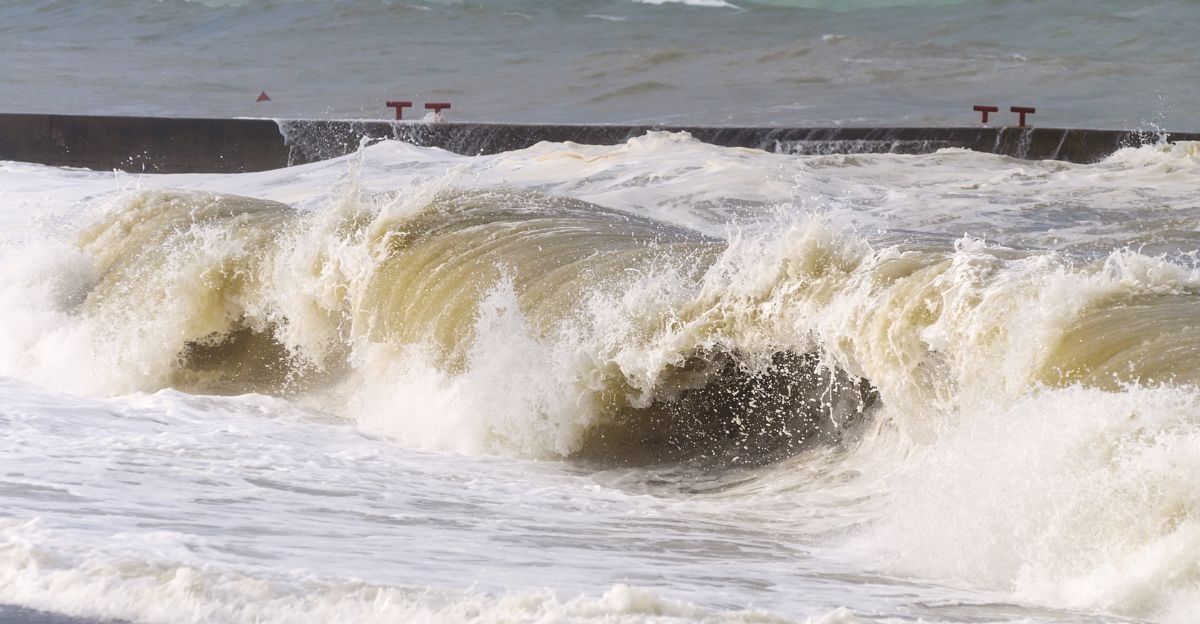
In Kipnuk, the ocean rose faster than anyone imagined possible. The surge climbed more than six feet above the highest recorded tide—nearly two feet higher than the previous record. Weather officials confirmed the historic nature of the flooding, with water rising faster than most residents could respond.
Families scrambled to rooftops clutching pets, children, and blankets as frigid water swept through homes. Officials warned that in the Delta’s flat, low-lying terrain, even small mistakes could turn deadly.
Houses Float Like Rafts in the Flood
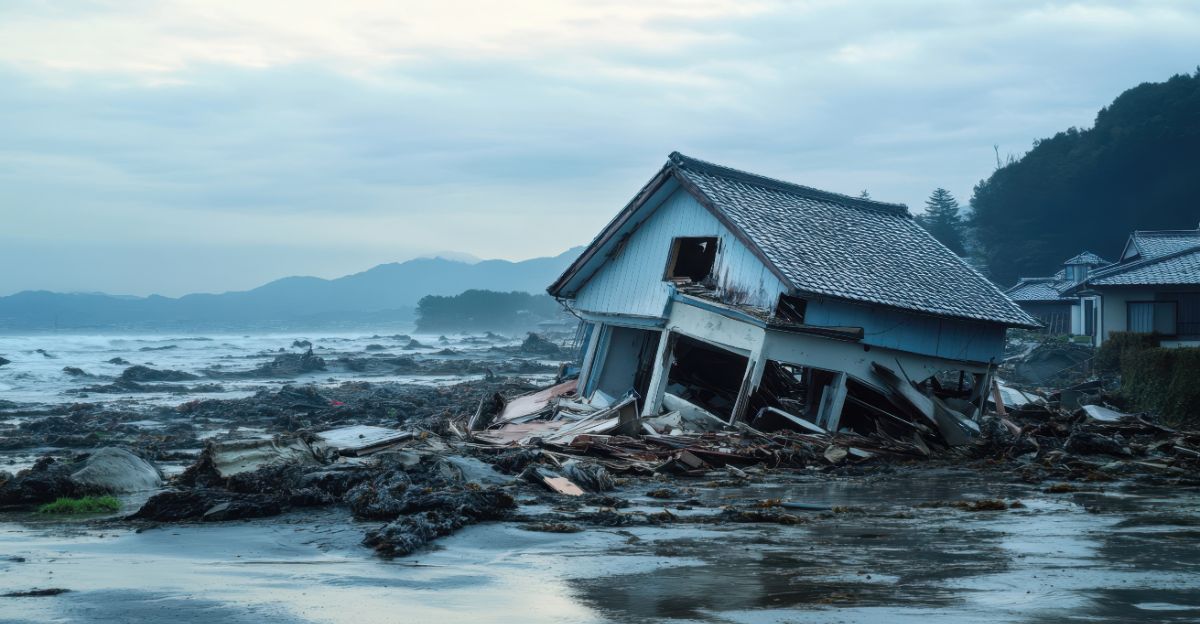
As daylight faded, scenes turned surreal. State troopers reported homes drifting across the tundra, carried by floodwaters that transformed familiar streets into rivers. Videos captured rooftops, boardwalks, and fishing sheds floating where yards once stood.
“We found families clinging to debris and waiting for rescue,” said an official. Airboats and helicopters combed the floodplain, rescuing dozens stranded on rooftops. The sight of houses floating away underscored both nature’s ferocity and the desperate speed of emergency response.
Counting the Human and Material Loss
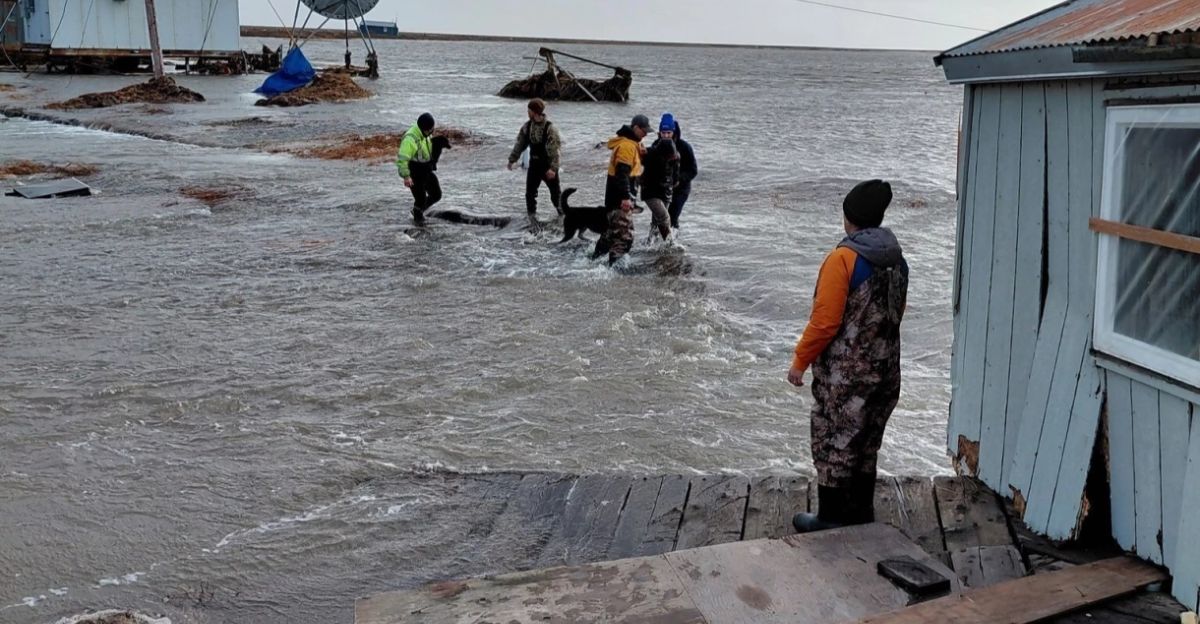
When the water finally began to recede, what it left behind was staggering. Dozens of homes were gone. Fuel tanks, food stores, and power lines had been ripped apart. “Each home represents years of work and family history,” said a regional administrator.
Without freezers or preserved fish, families faced immediate survival threats. Those who relied on hunting and fishing suddenly found themselves without tools or equipment—left to face the long winter with little more than what they could salvage.
Emergency Crews Race Against Freezing Temperatures
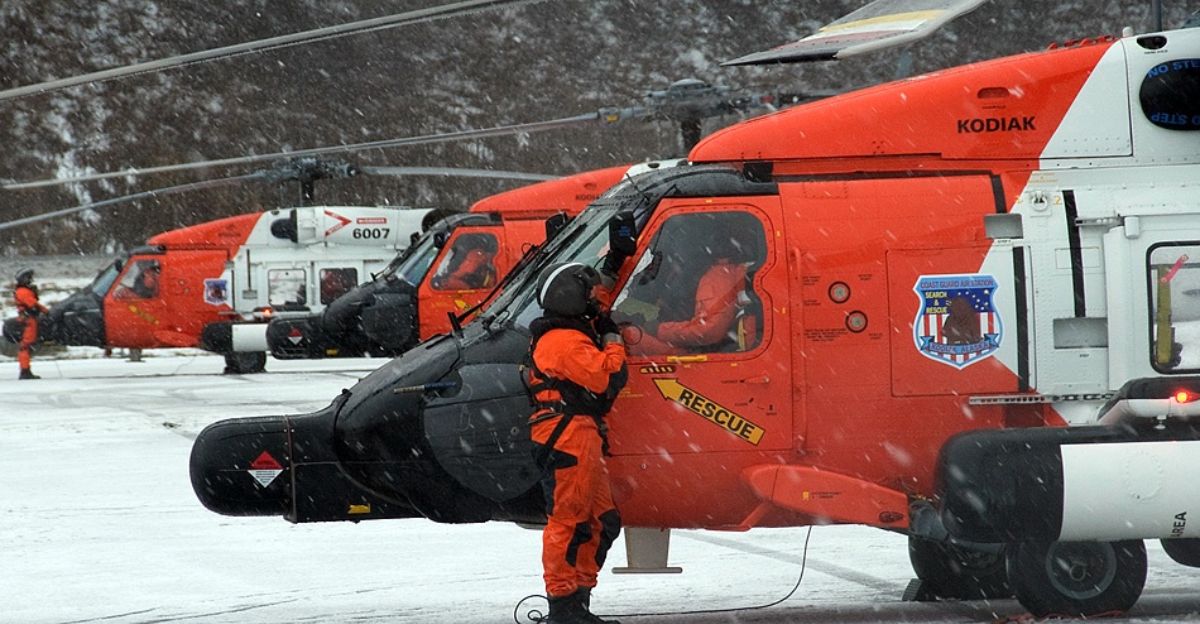
With freezing weather only days away, emergency crews rushed to deliver fuel, blankets, and food by air and boat. Schools and community centers became temporary shelters powered by generators. “Residents help each other before even asking for help,” said one aid coordinator.
Volunteers served hot meals, comforted children, and reassured elders as snow began to fall outside. In the growing cold, compassion became as vital as electricity—a shared warmth that carried people through uncertainty.
Neighbors Become Lifesavers
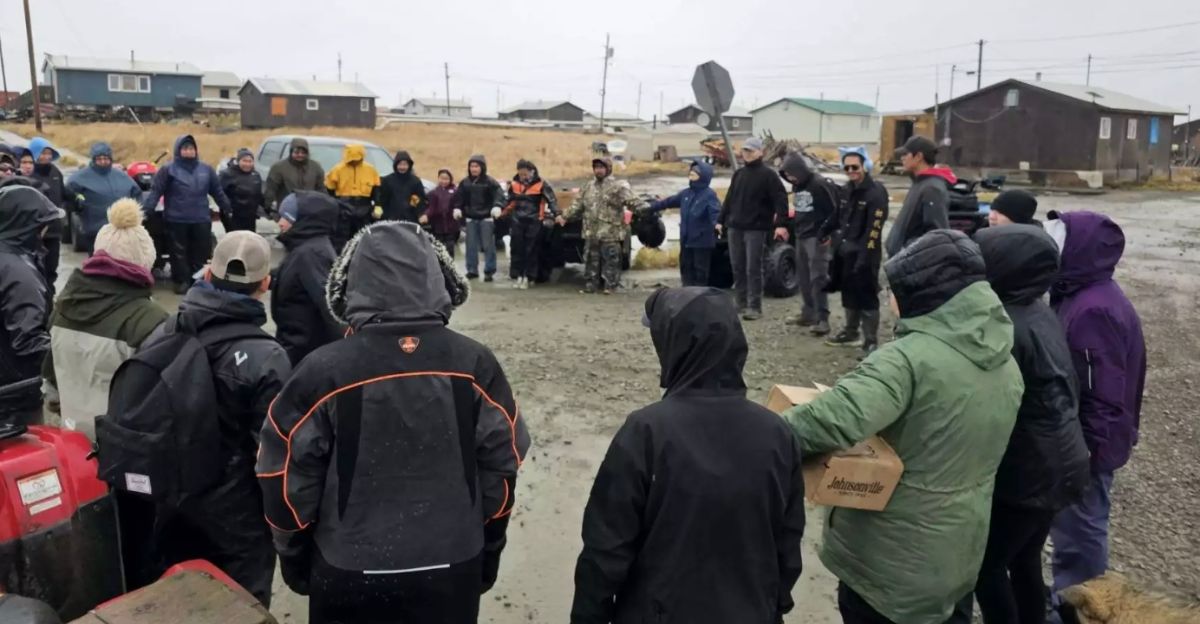
When formal aid couldn’t reach every corner of the Delta, residents turned to one another. Volunteers formed human chains to pass supplies through flooded streets. “Even in chaos, people come together,” said a shelter coordinator.
Officials said this quick, neighbor-to-neighbor response kept injuries lower than expected. Small acts—handing over a blanket, steadying a rescue boat, or calming a frightened child—became moments of quiet heroism that held communities together through the storm’s worst hours.
Power Outages Leave Villages in Darkness
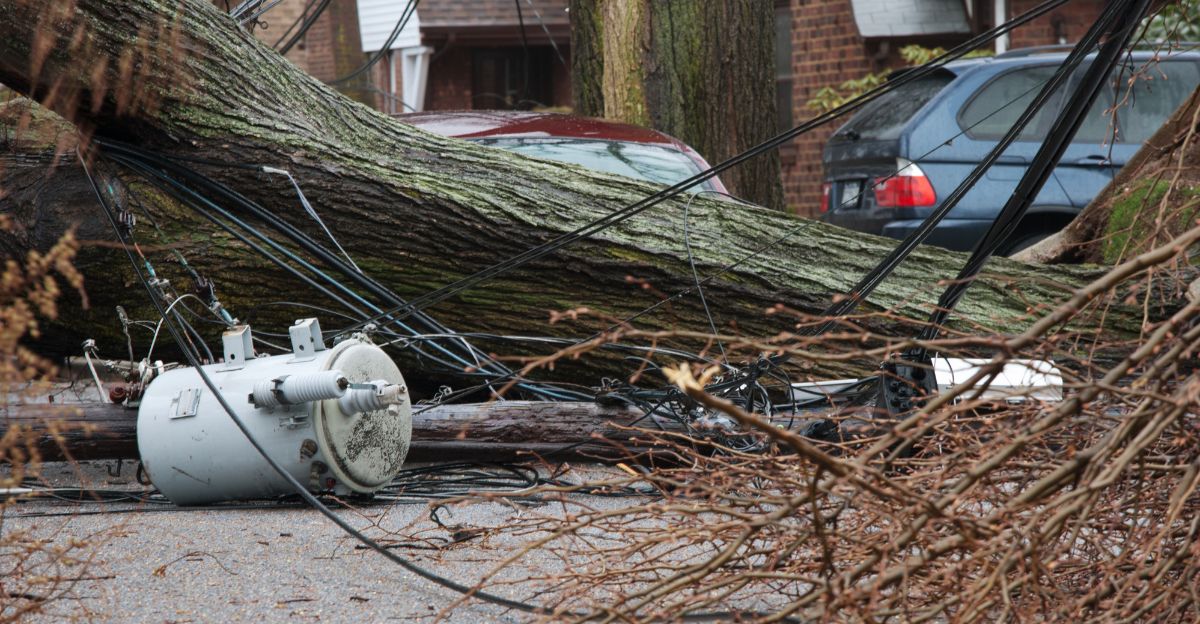
Days after the winds died down, darkness still hung over many villages. Power and water systems remained crippled as crews worked through flooded plants and damaged lines. Yet amid the cold and silence, neighbors shared generators, firewood, and food.
“The spirit of these communities is as vital as any supply drop,” an official said. In isolated towns like Kwigillingok and Kipnuk, survival depended as much on human connection as on physical aid.
Food Supplies Devastated by Floods
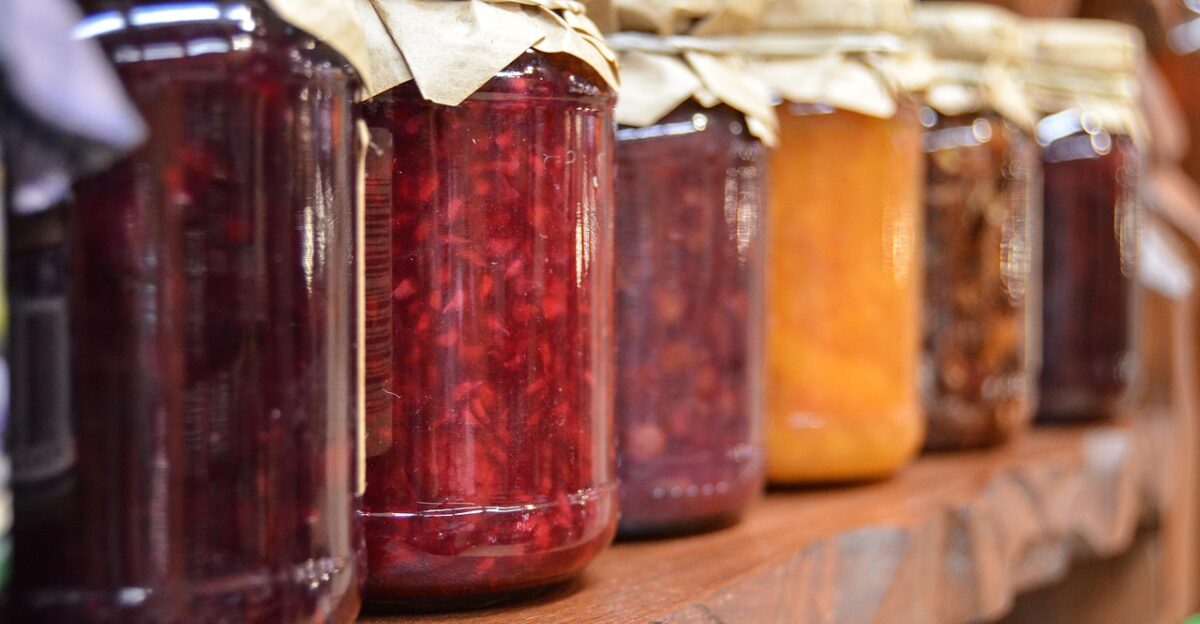
Perhaps no loss cut deeper than the destruction of winter food stores. Freezers, smoked fish, and preserved goods—months of sustenance—were washed away. “Food is survival,” said one resident. Without their provisions, families scrambled to salvage what they could, relying on emergency shipments from Bethel and other hubs. T
he storm didn’t just erase homes; it wiped out the lifelines that sustain life in remote, subsistence-based communities now facing a long, uncertain winter.
Mental Health Challenges Emerge
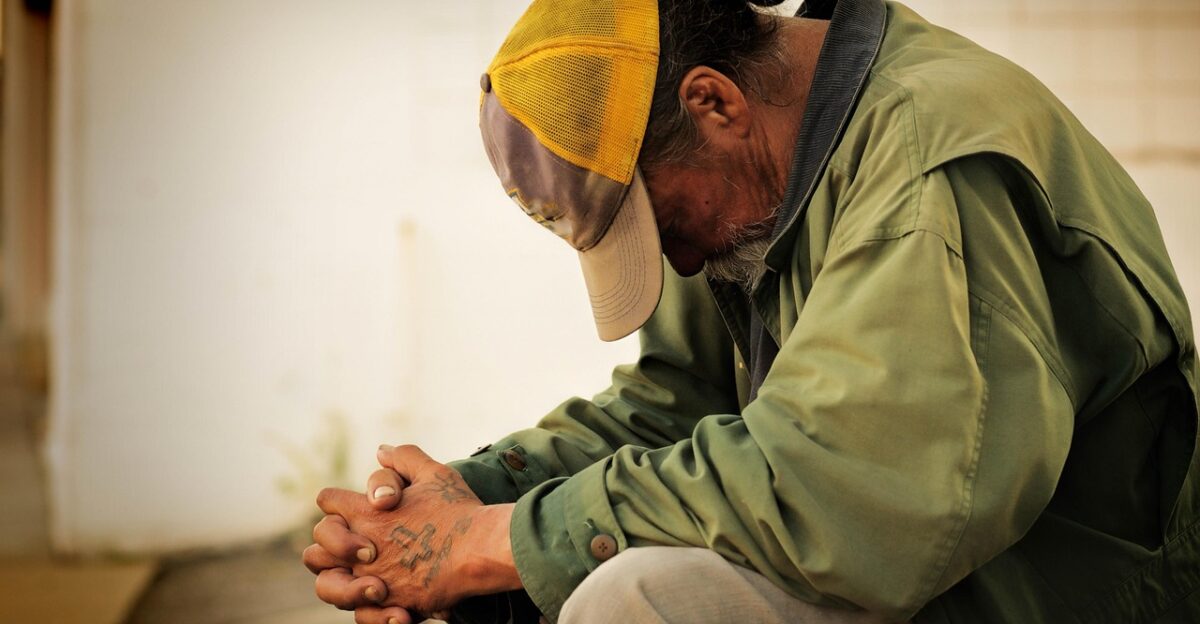
As families settled into shelters, the emotional toll quickly became clear. “Children were waking up scared of the water returning,” said a volunteer. Many had lost everything, and the isolation of winter only deepened the anxiety.
Officials deployed counselors to help families process the trauma, stressing that mental health support is as critical as food and fuel. In villages already battling darkness and cold, emotional recovery would take far longer than physical repairs.
Climate Change Drives New Risks
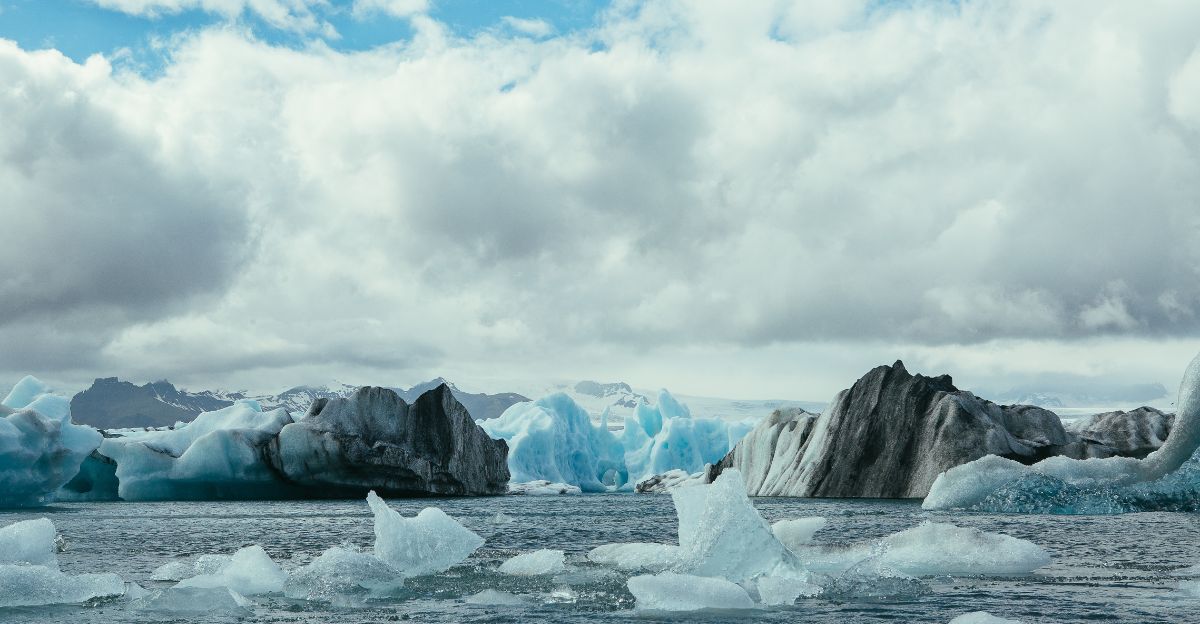
Experts say this storm wasn’t a fluke—it’s part of a larger pattern. “We’re witnessing climate-driven change in real time,” said Rick Thoman, Alaska climate specialist. Warmer oceans and thawing permafrost are reshaping Alaska’s coast, erasing natural buffers that once softened storms.
The same forces driving hurricanes in the Gulf of Mexico are now reaching the Arctic, blurring boundaries between once-separate storm regions. What was once rare is becoming frighteningly routine.
Lessons from Historic Hurricanes
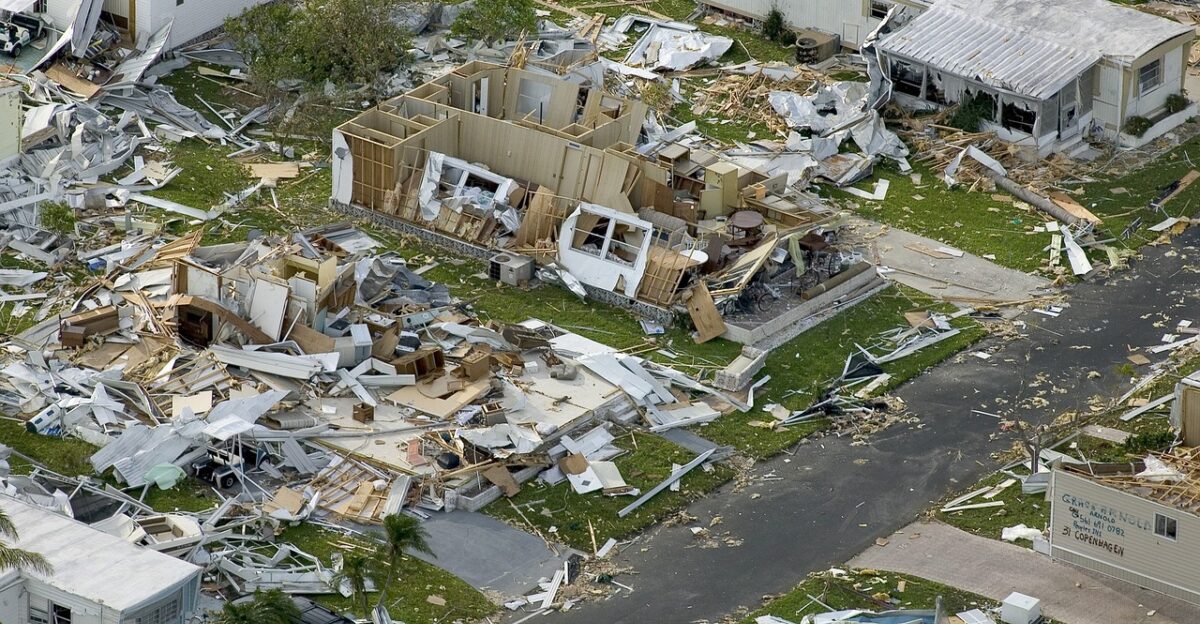
Officials and scientists drew parallels to Hurricane Elena’s 1985 devastation in Alabama—rapid onset, widespread loss, and years of recovery. “Disasters teach the same lesson across generations,” said a disaster preparedness analyst.
Learning from history, they added, can help communities build stronger infrastructure and better response plans. In an era of intensifying weather, knowledge from past catastrophes may be one of Alaska’s best defenses against the next storm.
Lawmakers Urge Federal Action

In Washington, Senator Lisa Murkowski called for increased federal support and long-term adaptation strategies. She expressed concern about the devastation and emphasized the need for infrastructure resilience.
Officials echoed that sentiment, emphasizing that rebuilding the Delta isn’t just about fixing what was lost—it’s about preparing for the future. Funding, upgraded infrastructure, and resilient design are now seen as critical steps toward long-term safety.
Cleanup and Rebuilding Begin
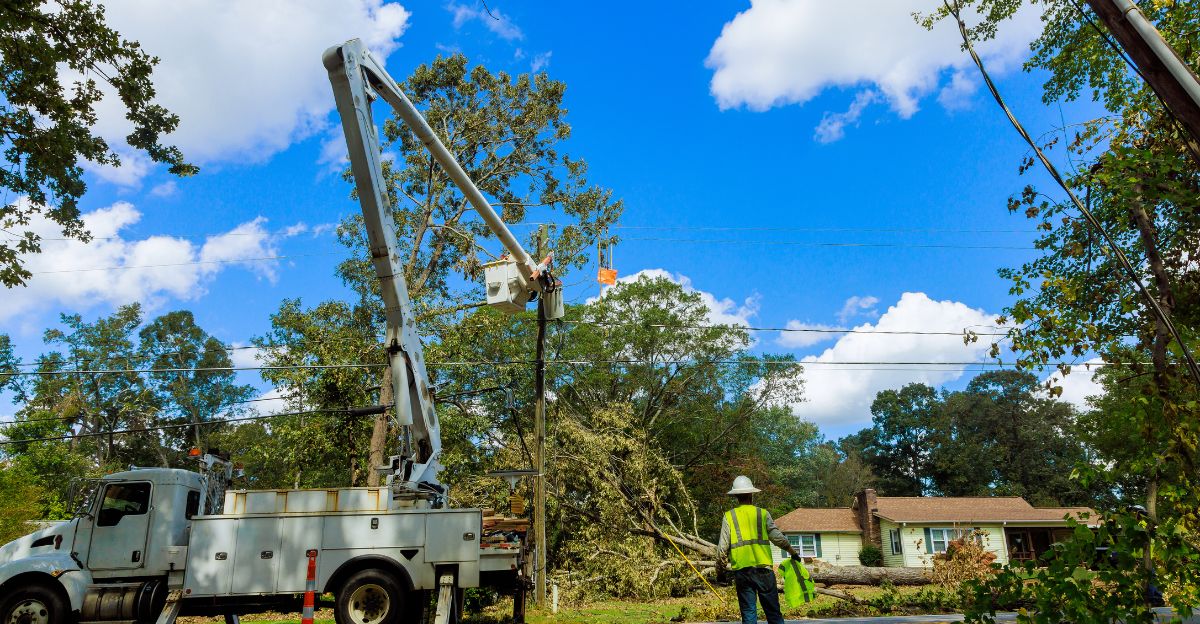
As the winds eased, tribal councils and public health officials led cleanup efforts. Crews cleared debris, repaired boardwalks, and issued boil-water advisories. “Safety takes time, but every day brings progress,” said a local aide.
With temperatures dropping, the focus turned to schools and community centers—spaces where families could gather and rebuild together. Despite exhaustion, villagers shared tools, time, and strength to make their towns livable again.
Resilience Through Community Effort
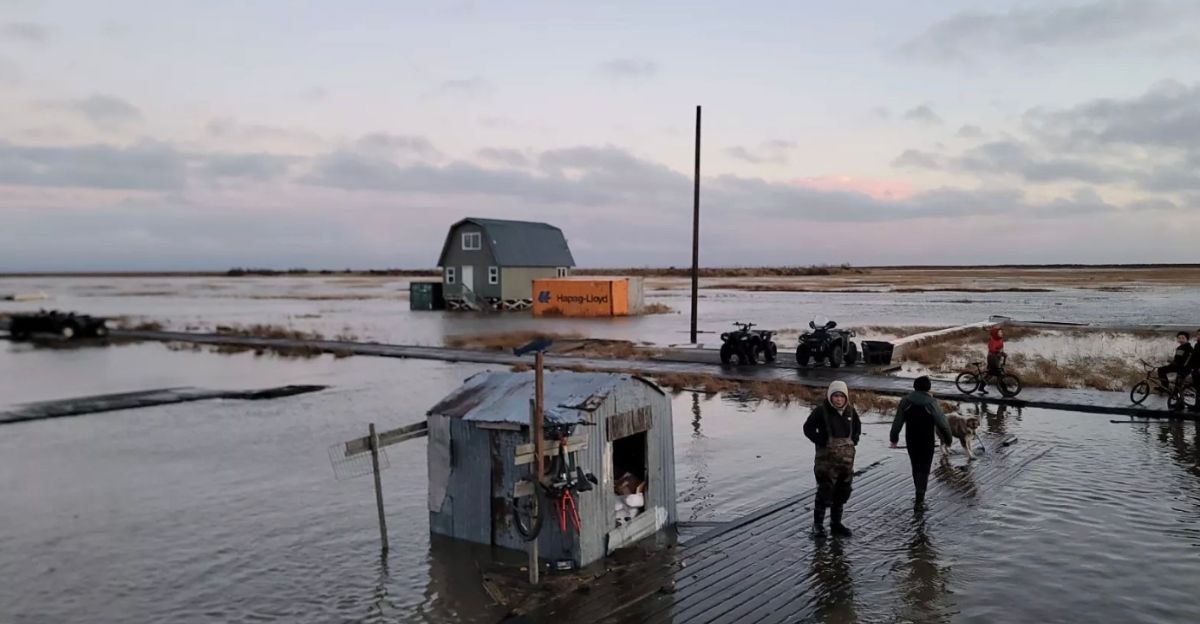
Across the Delta, recovery took on the rhythm of daily life. Neighbors shared hammers, food, and hope. Volunteers sewed blankets, prepared meals, and checked on elders. “Even small acts become lifesaving in these conditions,” said a shelter coordinator.
In a region repeatedly battered by storms, the ability to come together—to rebuild both homes and hearts—remains one of Alaska’s most powerful defenses against disaster.
Children Adapt Amid Chaos
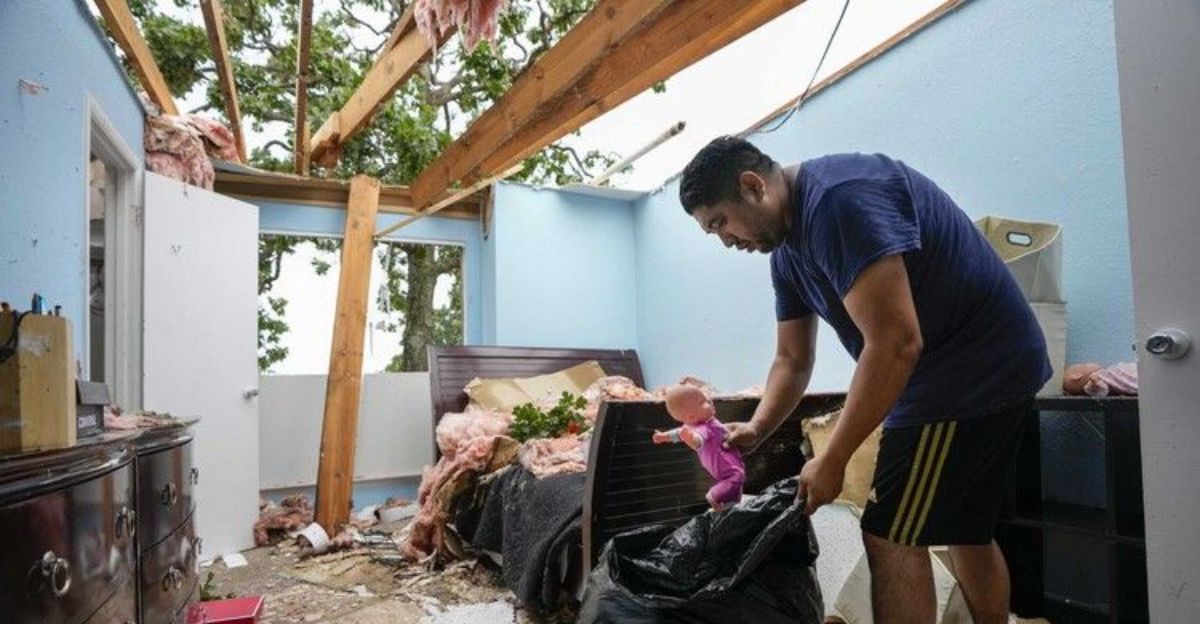
Even as adults worked to rebuild, children found moments of light in the darkness. In crowded shelters, they turned sandbags into toys and laughter into resilience. “These kids are witnessing trauma, but also learning endurance,” said a volunteer.
Counselors observed how their energy lifted entire rooms, proving that even amid hardship, the next generation carries forward the spirit of courage and community that defines life on the Delta.
Planning for the Future
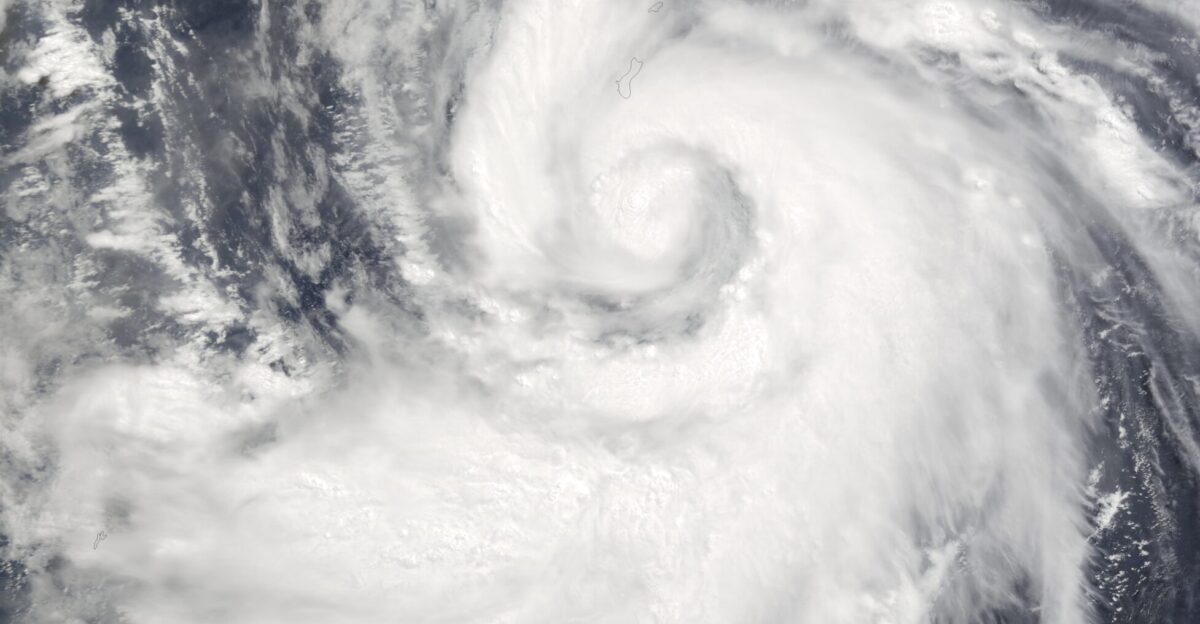
Experts say the lessons from Halong’s aftermath must shape what comes next. NOAA analysts recommend elevated housing, secure food storage, and early-warning systems tailored to Alaska’s unique geography.
In Kwigillingok and Kipnuk, leaders are already exploring flood defenses and disaster education. Officials say preparation—not just recovery—will define whether future storms bring devastation or resilience. The goal now is not just to survive, but to adapt.
Stories of Courage and Survival
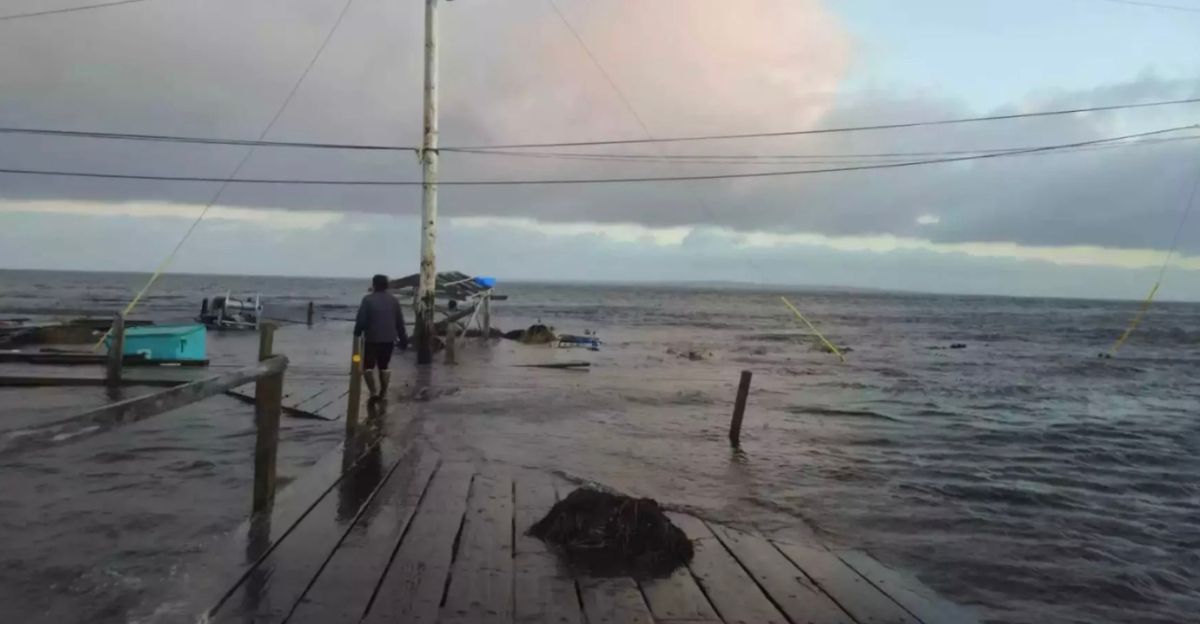
Survivors have begun sharing their stories—of clinging to rooftops, rescuing neighbors, and saving pets from the rising tide. “People came together in ways you couldn’t imagine,” said a local coordinator. Dozens were rescued by airboats and helicopters, their courage and quick thinking saving lives.
These firsthand accounts remind officials and residents alike that resilience isn’t just measured in recovery—it’s written in moments of bravery under impossible conditions.
Spirit of the Community Endures
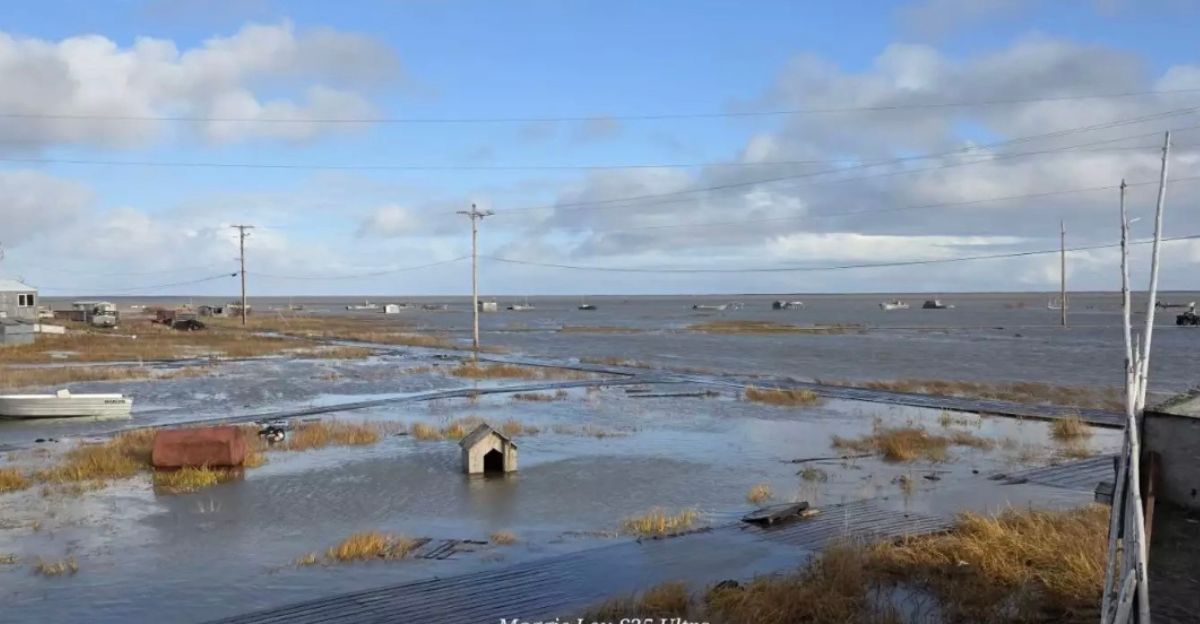
Weeks after Typhoon Halong’s remnants tore through the coast, families continue rebuilding as winter closes in. “The storm took homes, but not our will to survive,” said a regional coordinator. Across Alaska’s Delta, as on Alabama’s shores decades ago, resilience remains the defining trait.
The storms may reshape the landscape, but they cannot wash away the bonds, faith, and determination that keep these communities standing strong.